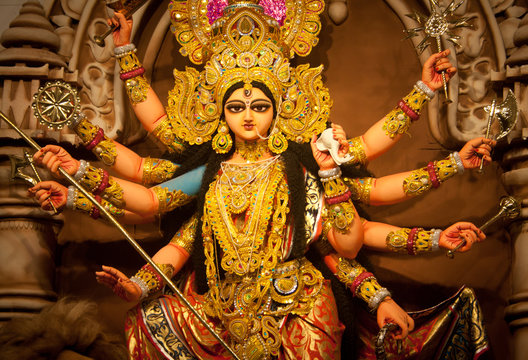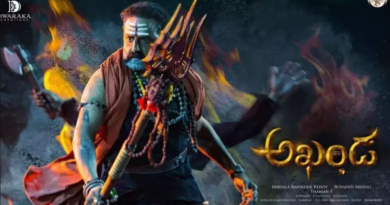Dussehra (Dasara) Festival: A Celebration of Victory and Tradition in India
Dussehra, also known as Dasara or Vijayadashami, is one of the most widely celebrated festivals in India. Observed on the tenth day of the Hindu calendar month of Ashwin, it marks the victory of good over evil. Dussehra signifies different mythological events across various regions of India, but the overarching theme remains the triumph of righteousness. The festival takes its name from two Sanskrit words: Dasha (meaning ten) and Hara (meaning defeat), symbolizing the defeat of the ten-headed demon king, Ravana.
Dussehra has been celebrated for centuries, reflecting India’s rich cultural heritage. It unites communities across linguistic, religious, and geographical boundaries in their shared celebrations. Let’s dive into the history of Dussehra and explore how it is observed in different parts of India.
Historical and Mythological Significance of Dussehra
1. The Ramayana and the Victory of Rama Over Ravana
The most popular legend associated with Dussehra comes from the Ramayana, an ancient Indian epic. According to the Ramayana, Lord Rama, the seventh avatar of Vishnu, waged war against the demon king Ravana, who had kidnapped his wife, Sita. Ravana, the ruler of Lanka, was a mighty king with ten heads, symbolizing ego, pride, and malice.
Rama, with the help of his loyal brother Lakshmana, the mighty monkey god Hanuman, and a vast army of monkeys, battled Ravana’s forces for nine days. On the tenth day, Lord Rama killed Ravana, marking the victory of good over evil. This day is celebrated as Vijayadashami, symbolizing the victory (Vijaya) of righteousness and truth.
In many parts of northern India, especially in places like Delhi, Uttar Pradesh, and Rajasthan, Dussehra celebrations feature dramatic performances of the Ramayana, known as Ramlila. These enactments culminate in the burning of massive effigies of Ravana, his brother Kumbhakarna, and his son Meghnath to commemorate their defeat and to symbolize the destruction of evil.
2. Durga Puja and the Slaying of Mahishasura
In eastern and northeastern India, Dussehra is closely linked with the celebration of Durga Puja, which is primarily observed in West Bengal, Odisha, Assam, and parts of Bihar. Here, the festival marks the victory of the goddess Durga over the buffalo demon Mahishasura.
According to Hindu mythology, Mahishasura, a powerful demon, had terrorized the heavens and the earth, rendering the gods powerless. The gods, in their desperation, created Goddess Durga, who battled Mahishasura for nine days and finally defeated him on the tenth day. Durga’s victory symbolizes the triumph of divine feminine power over brute force and evil.
During Durga Puja, intricately crafted idols of Goddess Durga are worshipped for nine days before being immersed in rivers or lakes on the tenth day, known as Visarjan. This immersion represents Durga’s return to her heavenly abode. Dussehra in this context symbolizes both the victory of good and the return of the goddess to her cosmic duties.
3. Arjuna’s Victory and the Pandavas’ Return
Another significant connection of Dussehra comes from the Mahabharata. The Pandavas, the central figures in the epic, were exiled for 13 years, with the last year requiring them to live in disguise. It is said that during their period of exile, they hid their weapons in a Shami tree (Prosopis cineraria).
On Vijayadashami, after completing their exile, the Pandavas retrieved their weapons from the Shami tree and defeated their enemies. This event is commemorated in parts of India, especially in Maharashtra, where Shami leaves are exchanged as a symbol of goodwill and prosperity. In Karnataka, the Mysore Dasara celebration has its roots in the Pandavas’ victory, and the city of Mysore is known for its grand ten-day festival in honor of Goddess Chamundeshwari (Durga).
Celebration of Dussehra Across India
Dussehra is celebrated with great fervor and enthusiasm in various parts of India, with each region adding its own unique flavor and tradition to the festival.
1. North India
In northern states such as Uttar Pradesh, Delhi, Haryana, and Punjab, Ramlila performances dominate the celebrations. Large-scale theatrical enactments of the Ramayana are performed for nine days, culminating in the burning of effigies of Ravana, Meghnath, and Kumbhakarna on Vijayadashami. These effigies, filled with fireworks, are set ablaze, accompanied by cheers and celebrations, symbolizing the end of evil.
In cities like Varanasi, Ayodhya, and Lucknow, Ramlila performances are deeply intertwined with religious and cultural practices, often involving thousands of participants. The festival concludes with joyous processions, fireworks, and communal feasting.
2. West Bengal
In West Bengal, Dussehra is synonymous with Durga Puja, a festival that celebrates the goddess Durga’s victory over Mahishasura. Durga Puja is not just a religious celebration but a cultural extravaganza in Bengal, featuring elaborate pandals (temporary structures) housing idols of Durga, Lakshmi, Saraswati, Ganesha, and Kartikeya.
For five days, the state erupts into festivities, including devotional songs, dances, cultural performances, and feasting. On the final day of Durga Puja, Sindoor Khela (the smearing of vermillion powder) takes place among married women before the idols are carried to the river for immersion.
3. Mysore, Karnataka
The Mysore Dasara is one of the most magnificent celebrations in India, attracting visitors from all over the country and abroad. In Mysore, Dussehra is celebrated as a royal festival, with the Mysore Palace being illuminated with thousands of lights.
The highlight of the festival is the grand procession on the day of Vijayadashami, which features a beautifully adorned idol of Goddess Chamundeshwari atop a golden throne carried on an elephant. The procession winds through the city, accompanied by dancers, musicians, and floats, creating a spectacular visual and cultural display. The city comes alive with cultural performances, exhibitions, and fireworks.
4. Maharashtra
In Maharashtra, Dussehra is celebrated with a strong emphasis on the exchange of Shami leaves as a gesture of goodwill. The tradition stems from the story of the Pandavas in the Mahabharata. People greet each other and exchange Shami leaves as a symbol of prosperity and success.
The festival is also marked by processions, offerings to Goddess Durga, and grand feasts. In Mumbai and Pune, local communities organize performances and events that bring people together in celebration.
5. Himachal Pradesh
The town of Kullu in Himachal Pradesh hosts a unique version of Dussehra that lasts for seven days. The Kullu Dussehra begins on Vijayadashami, unlike other regions where it marks the conclusion of the festival.
During the Kullu Dussehra, deities from various local temples are brought to the Dhalpur Maidan, where they are worshipped and honored. The festival features a grand procession, traditional music, and dance performances. The final day is marked by the symbolic burning of the demon king Ravana, accompanied by joyous celebrations and fireworks.
The Cultural Impact of Dussehra
Dussehra holds a mirror to India’s cultural diversity and shared values. It signifies the importance of righteousness, the triumph of good over evil, and the resilience of the human spirit. The festival brings people from different backgrounds together, fostering a sense of community and shared celebration.
Moreover, Dussehra has inspired various forms of cultural expressions, including folk dances, music, plays, and literature. From Kathakali performances in Kerala to Yakshagana in Karnataka, local art forms draw inspiration from the stories of Rama, Ravana, and Durga, making Dussehra a festival that not only connects the past with the present but also merges religion with cultural artistry.
Modern-Day Dussehra: A Blend of Tradition and Contemporary Celebrations
While Dussehra is rooted in ancient traditions, its modern-day celebrations have also evolved. The burning of effigies has become a spectacle with fireworks displays, music, and dance performances. In urban areas, Dussehra fairs and carnivals add a festive dimension, featuring rides, games, food stalls, and cultural programs.
In recent years, there has been a growing awareness of environmental concerns, with many communities opting for eco-friendly celebrations. Idols made of biodegradable materials, effigies filled with environmentally safe fireworks, and community-led initiatives to reduce waste are becoming more common in modern Dussehra celebrations.
Conclusion
Dussehra, or Vijayadashami, is more than just a festival; it is a celebration of India’s cultural heritage, values, and traditions. Whether it is Lord Rama’s victory over Ravana, Goddess Durga’s triumph over Mahishasura, or the Pandavas’ return from exile, Dussehra teaches the enduring lesson that good will always prevail over evil. The festival is a reminder to uphold righteousness, compassion, and moral strength, values that resonate deeply in Indian culture. With its rich historical and mythological significance, Dussehra




